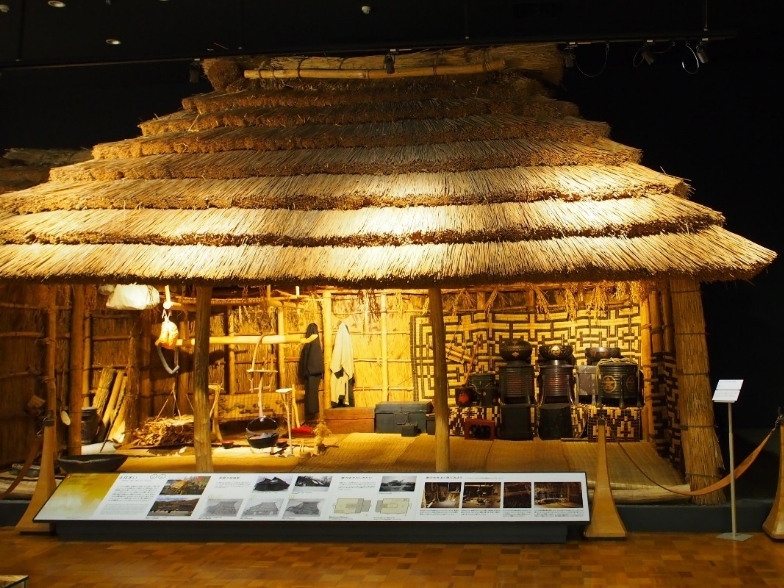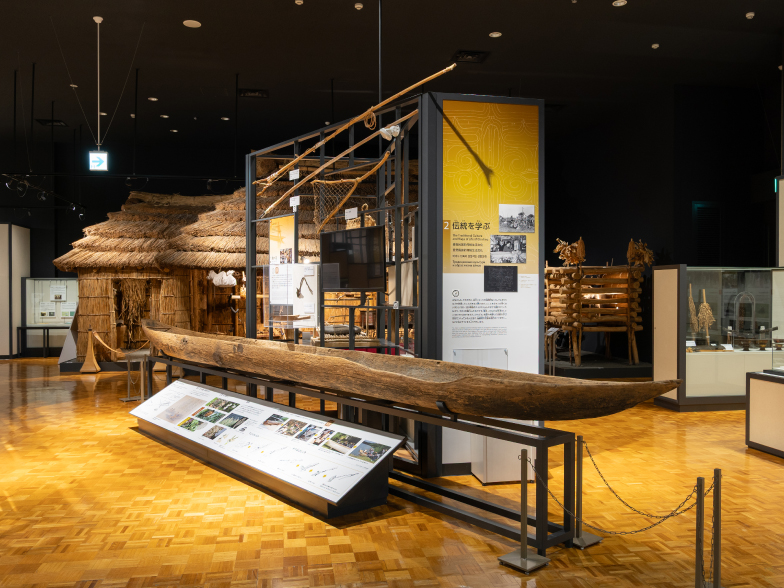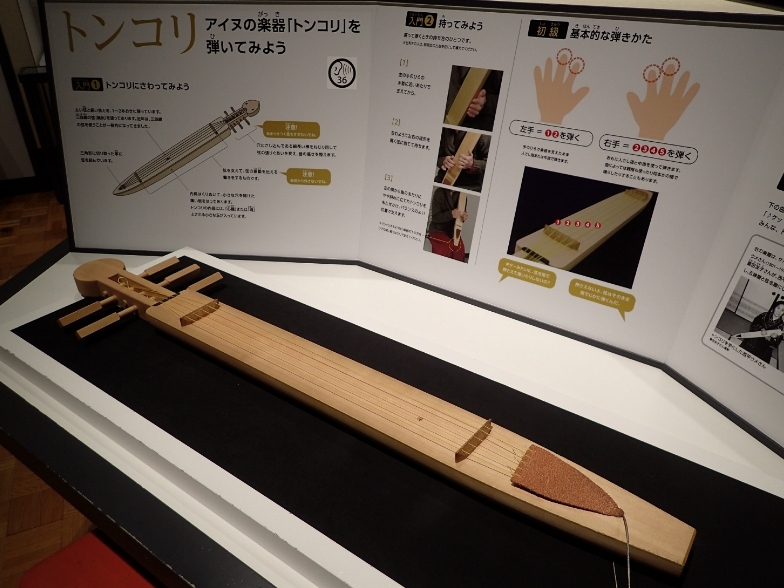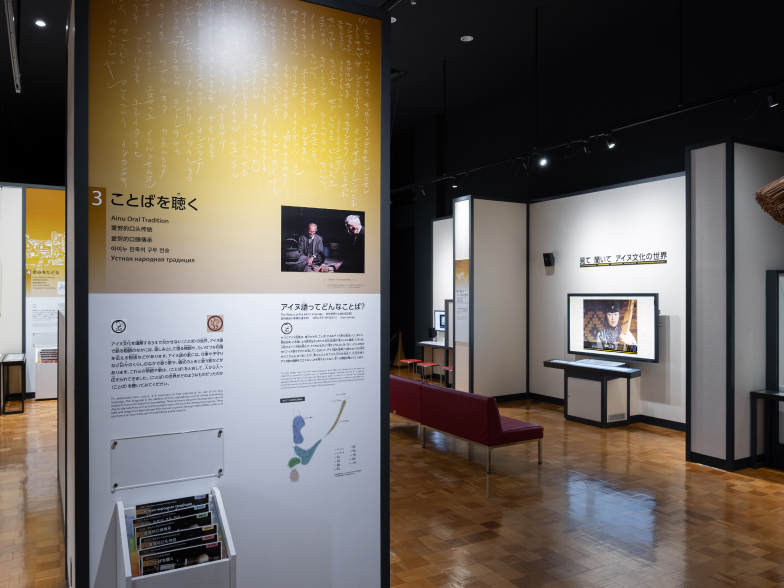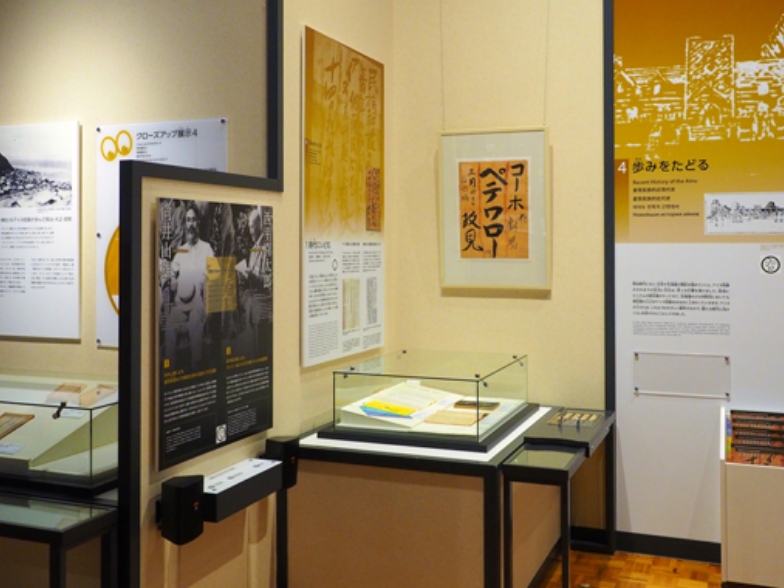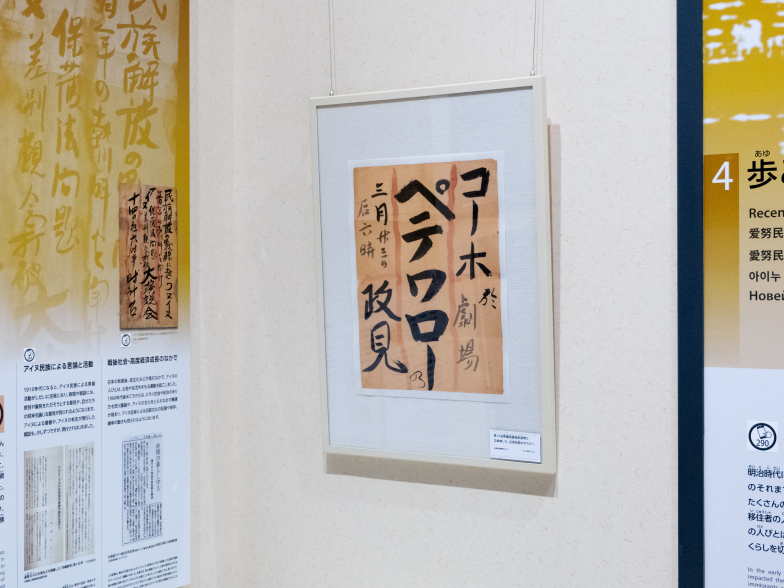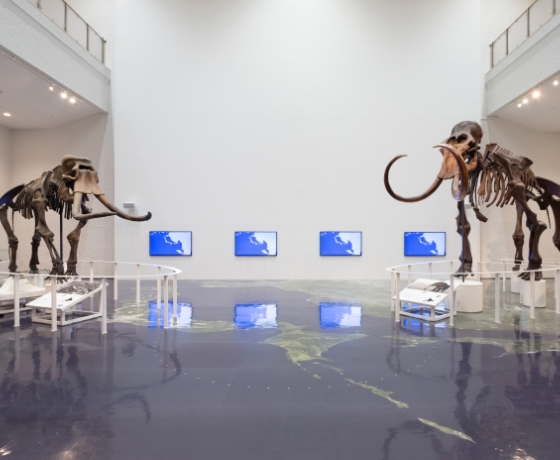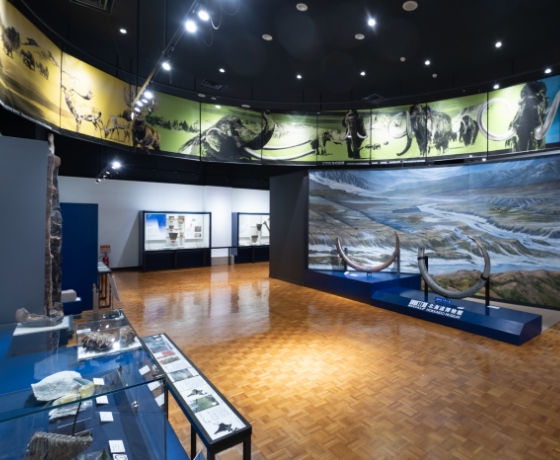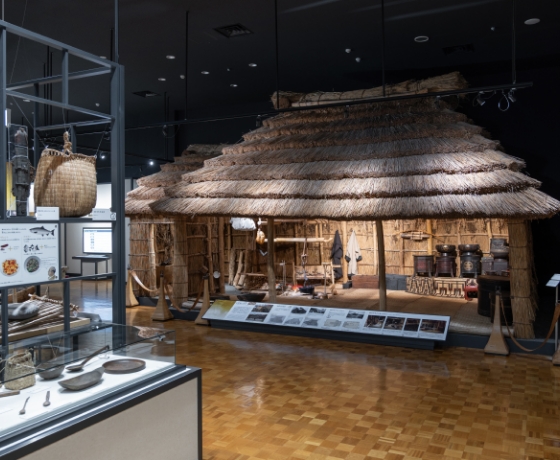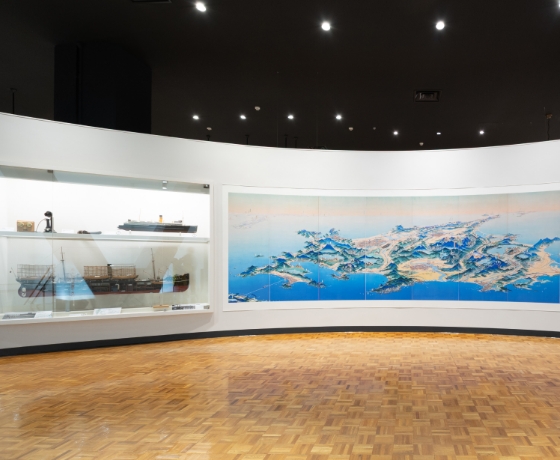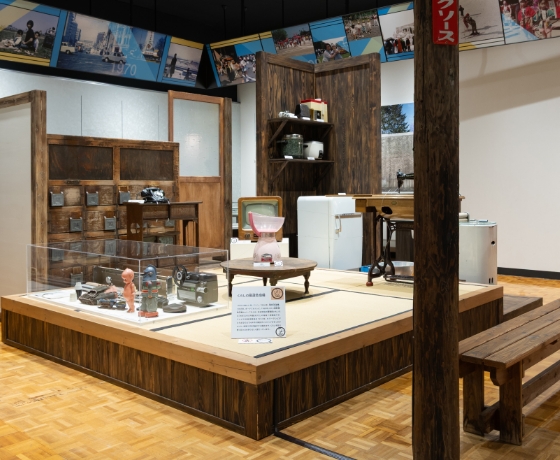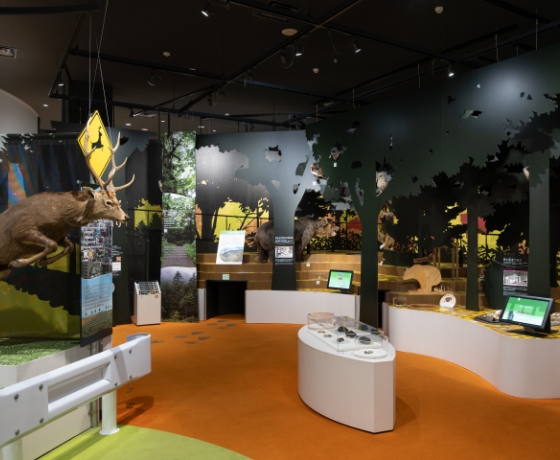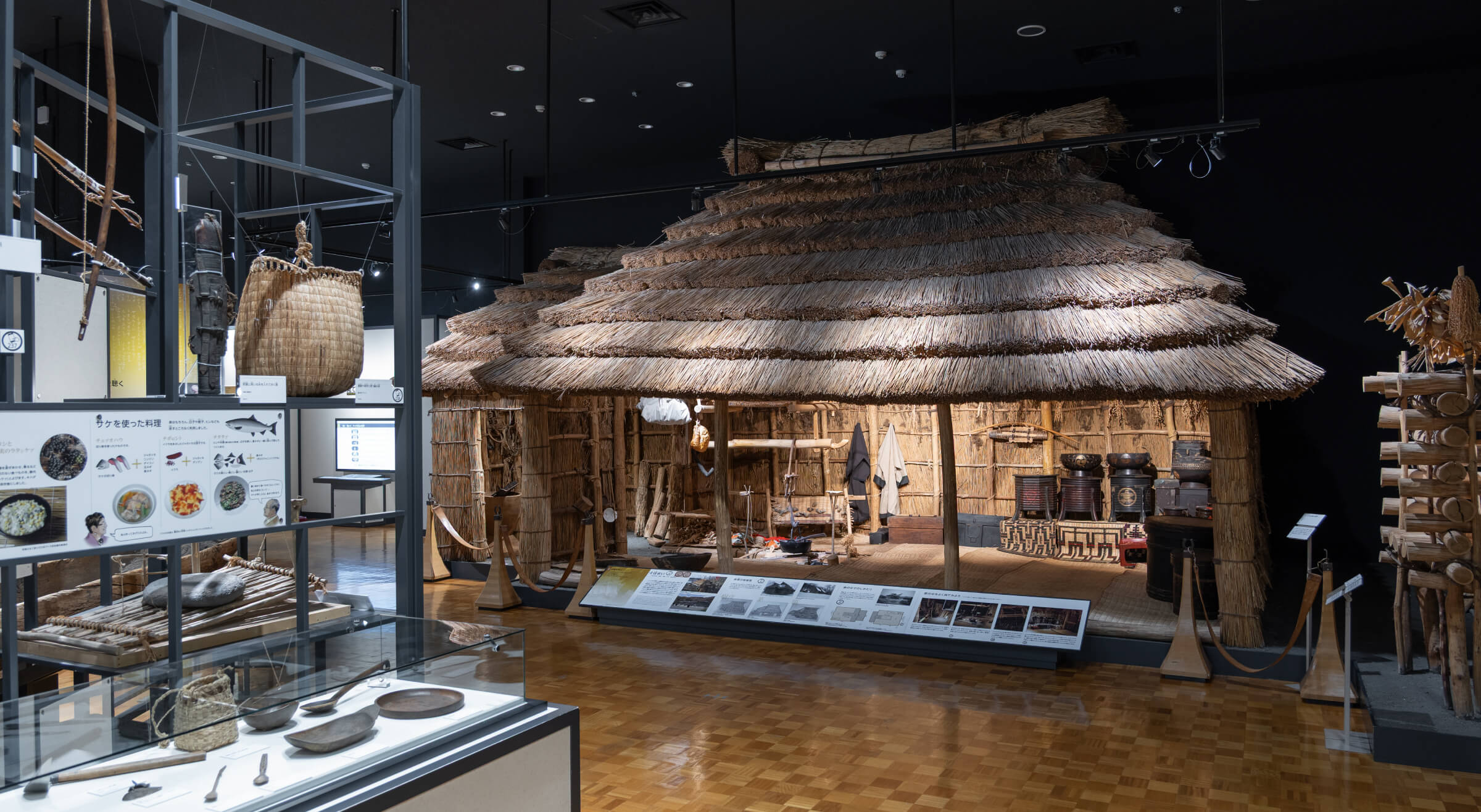
The Ainu are an indigenous people of Japan. “Ainu” means “human being” in the Ainu language. The Ainu have lived not only here in Hokkaido, but also in regions such as Sakhalin (Karafuto) and the Kuril Islands, developing a variety of cultures. When the Meiji government brought Hokkaido into Japan’s domain, settlement and development had a drastic impact upon the Ainu ways of life and culture. Facing these challenges, the Ainu have persevered, carrying on their cultural heritage to this day.
Theme 2: The Culture and Recent History of the Ainu
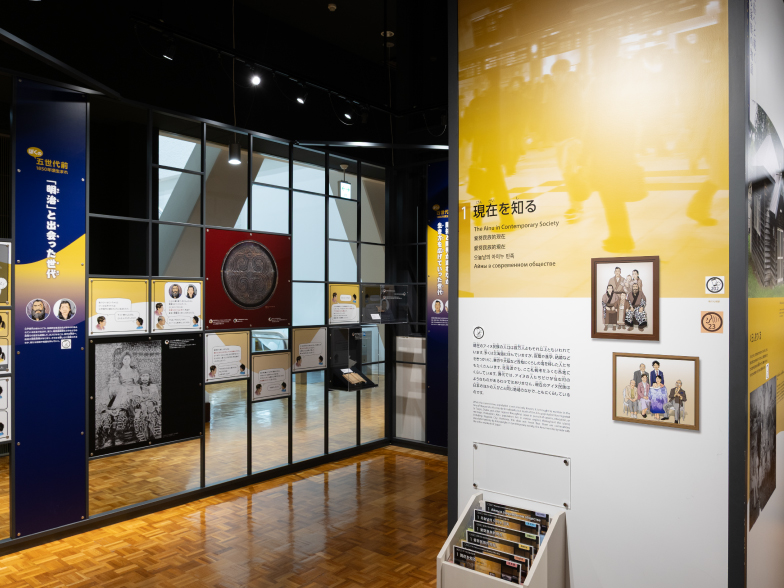
2-1: The Ainu in Contemporary Society
2-2: The Traditional Culture and Ways of Life of the Ainu
2-3: Ainu Oral Tradition
2-4: Recent History of the Ainu
Exhibits
Morning at Sapporo Station
Morning at Sapporo Station

This picture was taken at Sapporo Station during one morning in 2014. People are headed to work or school. Ainu living in Sapporo start their day out in a similar fashion, commuting to work or school, or heading out shopping. Some people unfamiliar with the Ainu may have the preconception that the Ainu live in separate, isolated communities. In fact, the modern-day Ainu people are part of the same communities as the other residents of Japan.
Makiri
Makiri
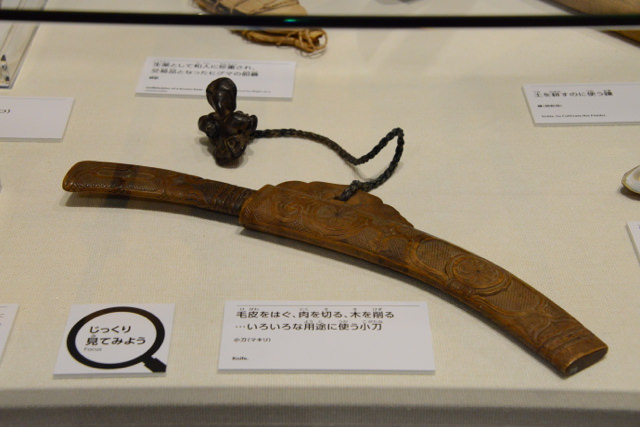
A knife used not only for cutting but also for scraping and cooking. Beautiful patterns were carved on the hilt and sheath. The makiri was so useful it that was sought after by Wajin Japanese as well, which made it a popular trade item.
Saranip
Saranip
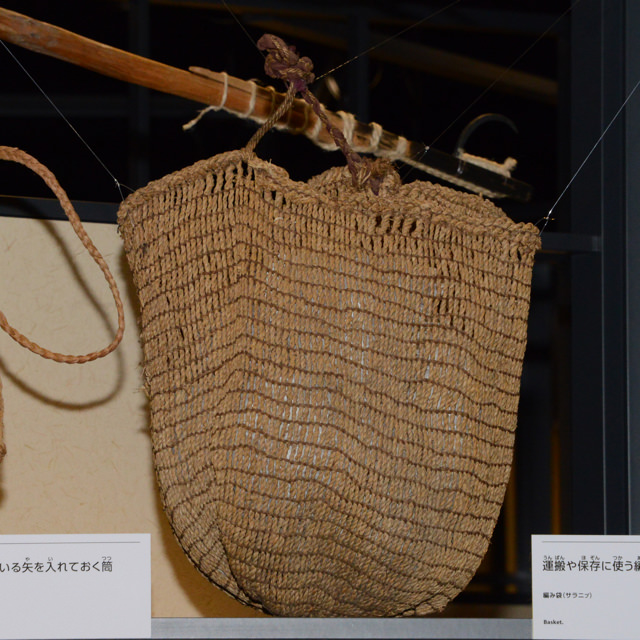
The saranip was a basket woven with tree bark and stems of various climbing plants. Through a combination of various materials and weaves baskets of different size and shape can be made. The Ainu people use them for carrying grain such as foxtail millet and Japanese millet, wild plants and fish.
Traditional Clothing
Traditional Clothing
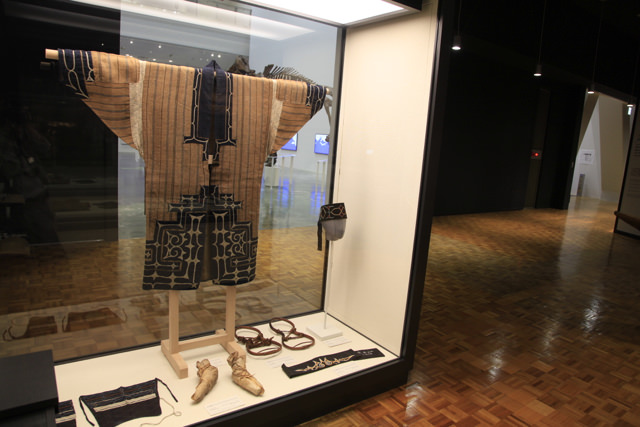
The glass case allows you to view the clothing from either side, so you can look closely and notice the detail of the embroidery and patterns. The displays are changed every two to three months so something different can be viewed with each visit.
Ikupasuy (libation sticks) and Tuki (lacquered bowl)
Ikupasuy (libation sticks) and Tuki (lacquered bowl)
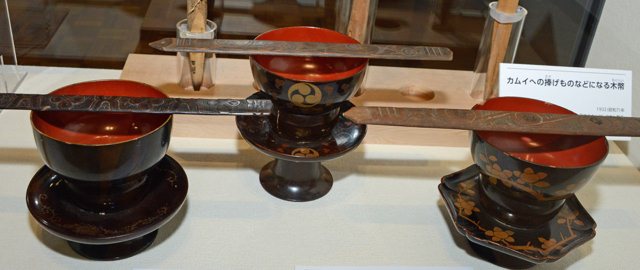
These are used for offering sacred sake to kamuy and to the ancestors for prayers. You can see a reproduction of an offering to kamuy in the display. Each bowl is set on a base and has a stick on it.
Dwelling
Dwelling
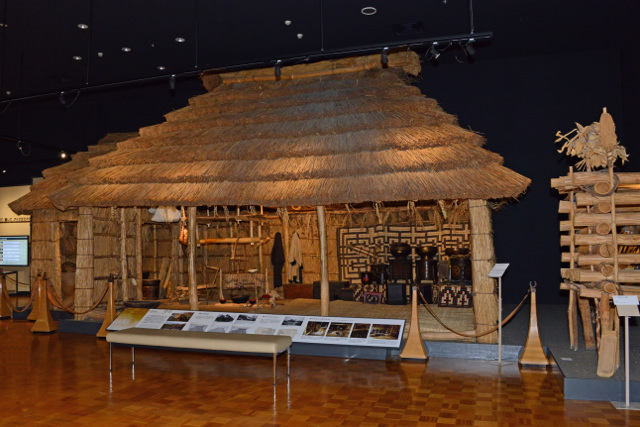
The dwelling exhibited here is a former residence that has been restored under the instruction of Mr. Yaichiro Hama (1916-91), who was born and raised in Shiraoi, Iburi, Hokkaido. The restoration was slightly scaled down to suit the height of the museum’s ceilings. The hearth occupies the center, and there are places designated for sitting, sleeping, and keeping valuables or ritual tools. It is said that the hearth coals were never allowed to go cold. Over time, the fire warmed the earth, and the walls and roof reeds acted as insulation, sheltering the inhabitants from Hokkaido’s cold winters.
Ainu Language Blocks
Ainu Language Blocks
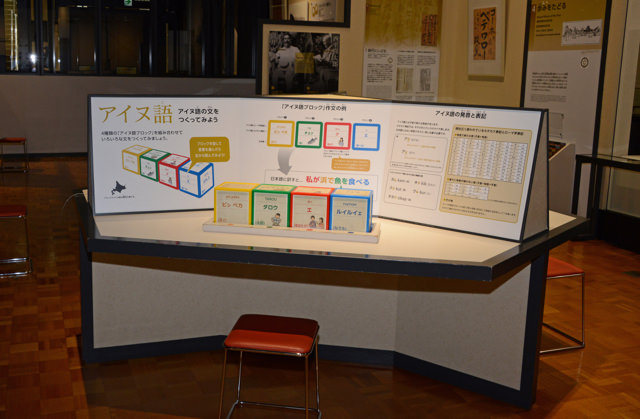
You can experiment with the Ainu language by playing with these blocks. You can make grammatically correct sentences as long as the color order goes from yellow to blue. It's particularly important to make sure that the red blocks (subjective and objective personal affixes) follow the blue (verbs).
Try Your Hand at Playing the Tonkori
Try Your Hand at Playing the Tonkori
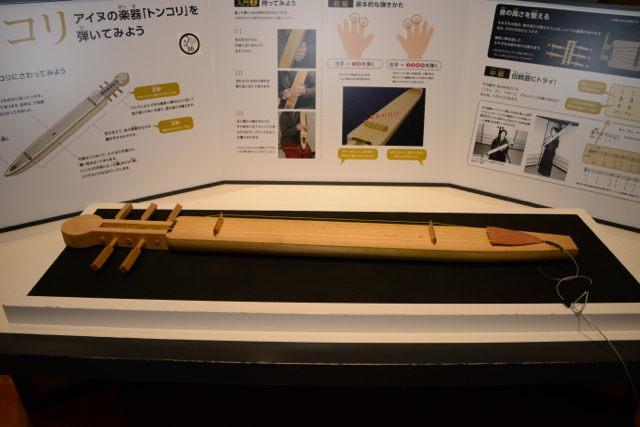
Here, you can try your hand at playing the tonkori, a five-stringed instrument traditionally used by the Sakhalin Ainu. Softly pluck the strings to hear the sound it makes. Photographs describe how the tonkori is held and played.
White Fox's Love at First Sight
White Fox's Love at First Sight
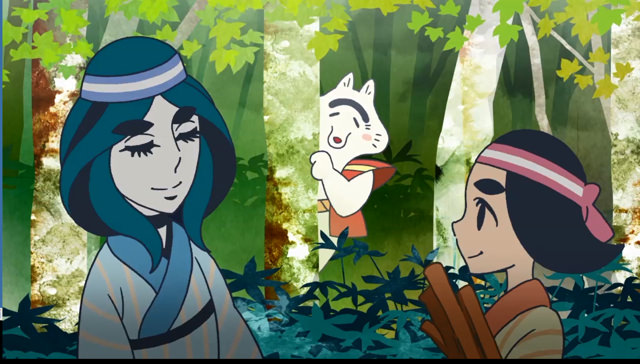
This animation was based on the story in the Ainu language, which was recorded by one of the staff of our museum. The story is about kamuy brothers living as white foxes on a mountain, whose elder brother falls in love with a human. In order to make this story into an animation, we provided the necessary items and decorations, such as the Ainu tools and a traditional house. It is not always possible to convey the Ainu worldview through animation, and there are also elements adapted from other Ainu stories, but we have tried to limit these parts to make the story as genuine as possible.
Poster for a Speech by Ainu Youths
Poster for a Speech by Ainu Youths
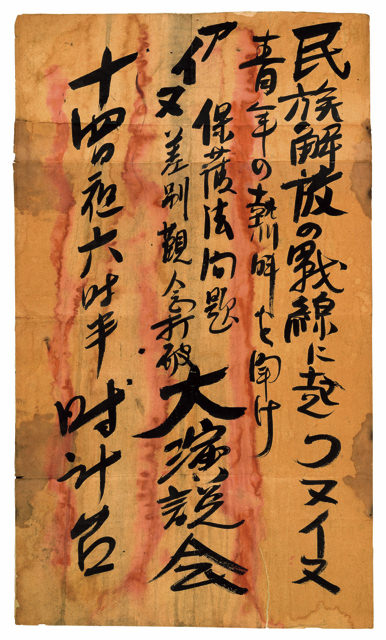
During the Meiji Period (1868-1912) the Japanese government began settling and developing Hokkaido, which greatly impacted the culture and way of the life of the Ainu. Forced to live in challenging conditions, the Ainu endured and paved the way for the future. This photograph was taken around 1930 and shows a poster created to inform the general public about a speech to be given by Ainu youths at the Sapporo Clock Tower. The poster calls on the Japanese people to change their discriminatory preconceptions and draws attention to the issues associated with policies on the Ainu people.
